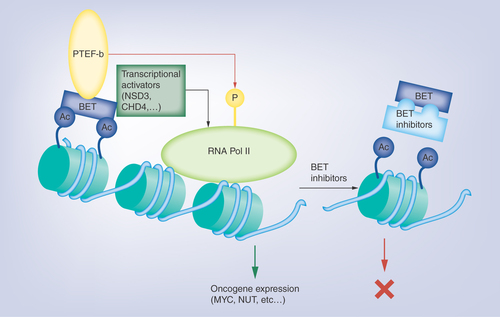Figures & data
Table 1. Preclinical (in vitro) inhibitory activity of bromodomain and extra-terminal inhibitors with their respective clinical structures.
Table 2. Clinical trials of bromodomain and extra-terminal inhibitors.
Table 3. Combination therapy using bromodomain and extra-terminal inhibitors.

